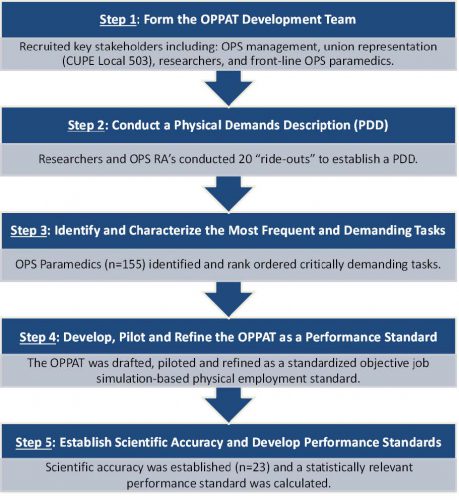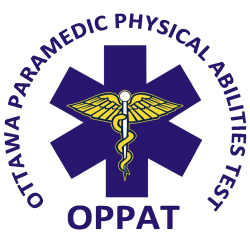Why is a new best practice standard necessary?
In 2013, through an arbitration on physical employment testing in the paramedic sector, Union (CUPE local 503) and Management reached a Minutes of Settlement agreement resolving that static strength testing could not be included within paramedic-based physical employment test.
“Many of the medics forced to submit to the {previous protocol} found it difficult to complete and highly unrealistic…several veteran paramedics either failed or were injured while completing the test.”
Source: James Watson, Vice President CUPE 503, Ottawa Sun, July 28, 2013.
A best practice standard should…
- have a strong evidence-base;
- be legally defensible;
- be based on the best practice template emerging from the seminal 1999 Meiorin Supreme Court Case;
- use job-specific simulation; and,
- be easily implemented.
The Ottawa Paramedic Physical Ability Test (OPPATTM) was designed by academic researchers as an evidence-based, job specific simulation to test the physical ability required to meet the demands of paramedic work.
Research and Development Process
The test is based on a five step process:

References
Coffey, B., MacPhee, R.S., Socha, D., & Fischer, S.L. (2016). A physical demands description of paramedic work in Canada. International Journal of Industrial Ergonomics, 53, 355-362.
Morales, L., McEachern, B.M., MacPhee, R.S. & Fischer, S.L. (2016). Patient acuity as a determinant of paramedics’ frequency of being exposed to physically demanding work activities. Applied Ergonomics, 56, 187-193.
Fischer, S.L., Sinden, K.S., MacPhee, R.S. and the Ottawa Paramedic Service Research Team. Identifying the critical physical demanding tasks of
paramedic work: towards the development of a physical employment standard. Applied Ergonomics, 2017.
To find out more contact the Research Team.
